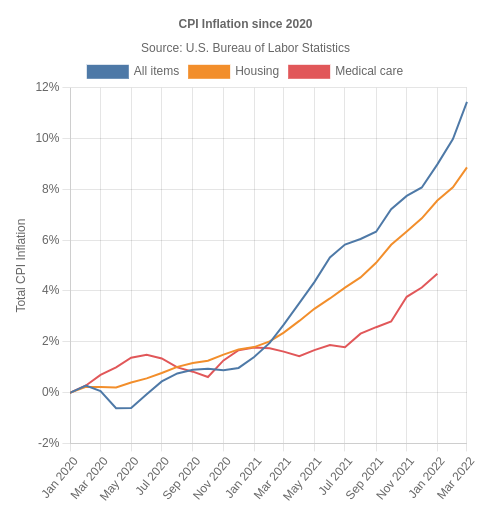Inflation in 1800 and its effect on dollar value
$1 in 1799 is equivalent in purchasing power to about $1.02 in 1800. The dollar had an average inflation rate of 2.44% per year between 1799 and 1800, producing a cumulative price increase of 2.44%. Purchasing power decreased by 2.44% in 1800 compared to 1799. On average, you would have to spend 2.44% more money in 1800 than in 1799 for the same item.
This means that prices in 1800 are 1.02 times as high as average prices since 1799, according to the Bureau of Labor Statistics consumer price index.
The inflation rate in 1799 was 0.00%. The inflation rate in 1800 was 2.44%. The 1800 inflation rate is higher compared to the average inflation rate of 1.45% per year between 1800 and 2025.
Inflation rate is calculated by change in the consumer price index (CPI). The CPI in 1800 was 12.60. It was 12.30 in the previous year, 1799. The difference in CPI between the years is used by the Bureau of Labor Statistics to officially determine inflation.
| Average inflation rate | 2.44% |
| Converted amount $1 base | $1.02 |
| Price difference $1 base | $0.02 |
| CPI in 1799 | 12.300 |
| CPI in 1800 | 12.600 |
| Inflation in 1799 | 0.00% |
| Inflation in 1800 | 2.44% |
| $1 in 1799 | $1.02 in 1800 |
Inflation by Country
Inflation can also vary widely by country. For comparison, in the UK £1.00 in 1799 would be equivalent to £1.36 in 1800, an absolute change of £0.36 and a cumulative change of 36.36%.
Compare these numbers to the US's overall absolute change of $0.02 and total percent change of 2.44%.
Inflation by Spending Category
CPI is the weighted combination of many categories of spending that are tracked by the government. Breaking down these categories helps explain the main drivers behind price changes.
This chart shows the average rate of inflation for select CPI categories between 1799 and 1800.
Compare these values to the overall average of 2.44% per year:
| Category | Avg Inflation (%) | Total Inflation (%) | $1 in 1799 → 1800 |
|---|---|---|---|
| Food and beverages | 0.00 | 0.00 | 1.00 |
| Housing | 0.00 | 0.00 | 1.00 |
| Apparel | 0.00 | 0.00 | 1.00 |
| Transportation | 0.00 | 0.00 | 1.00 |
| Medical care | 0.00 | 0.00 | 1.00 |
| Recreation | 0.00 | 0.00 | 1.00 |
| Education and communication | 0.00 | 0.00 | 1.00 |
| Other goods and services | 0.00 | 0.00 | 1.00 |
For all these visualizations, it's important to note that not all categories may have been tracked since 1799. This table and charts use the earliest available data for each category.
How to calculate inflation rate for $1, 1799 to 1800
Our calculations use the following inflation rate formula to calculate the change in value between 1799 and 1800:
Then plug in historical CPI values. The U.S. CPI was 12.3 in the year 1799 and 12.6 in 1800:
$1 in 1799 has the same "purchasing power" or "buying power" as $1.02 in 1800.
To get the total inflation rate for the 1 years between 1799 and 1800, we use the following formula:
Plugging in the values to this equation, we get:
Data source & citation
Raw data for these calculations comes from the Bureau of Labor Statistics' Consumer Price Index (CPI), established in 1913. Price index data from 1774 to 1912 is sourced from a historical study conducted by political science professor Robert Sahr at Oregon State University and from the American Antiquarian Society. Price index data from 1634 to 1773 is from the American Antiquarian Society, using British pound equivalents.
You may use the following MLA citation for this page: “Inflation Rate in 1800 | Inflation Calculator.” Official Inflation Data, Alioth Finance, 16 May. 2025, https://www.officialdata.org/inflation-rate-in-1800.
Special thanks to QuickChart for their chart image API, which is used for chart downloads.
in2013dollars.com is a reference website maintained by the Official Data Foundation.
| Average inflation rate | 2.44% |
| Converted amount $1 base | $1.02 |
| Price difference $1 base | $0.02 |
| CPI in 1799 | 12.300 |
| CPI in 1800 | 12.600 |
| Inflation in 1799 | 0.00% |
| Inflation in 1800 | 2.44% |
| $1 in 1799 | $1.02 in 1800 |

